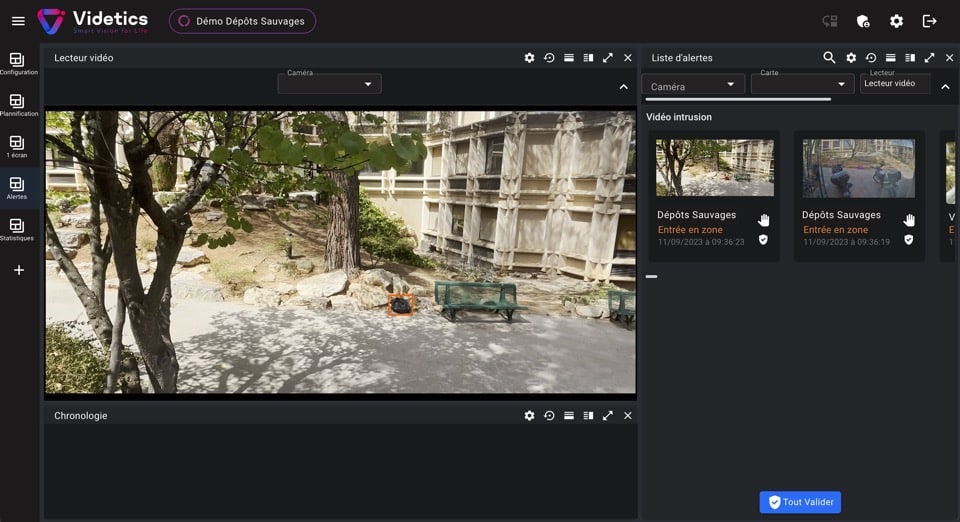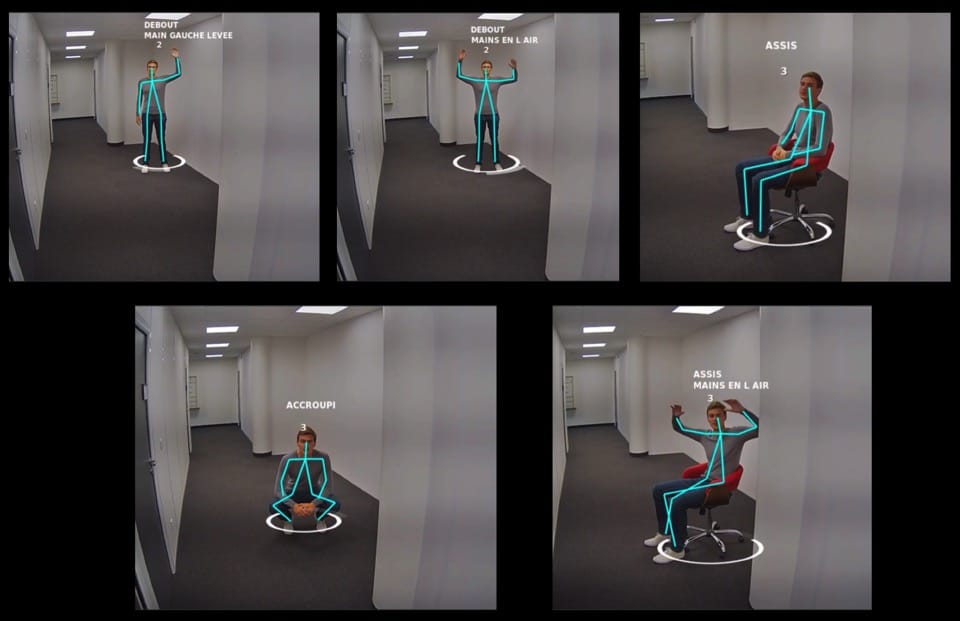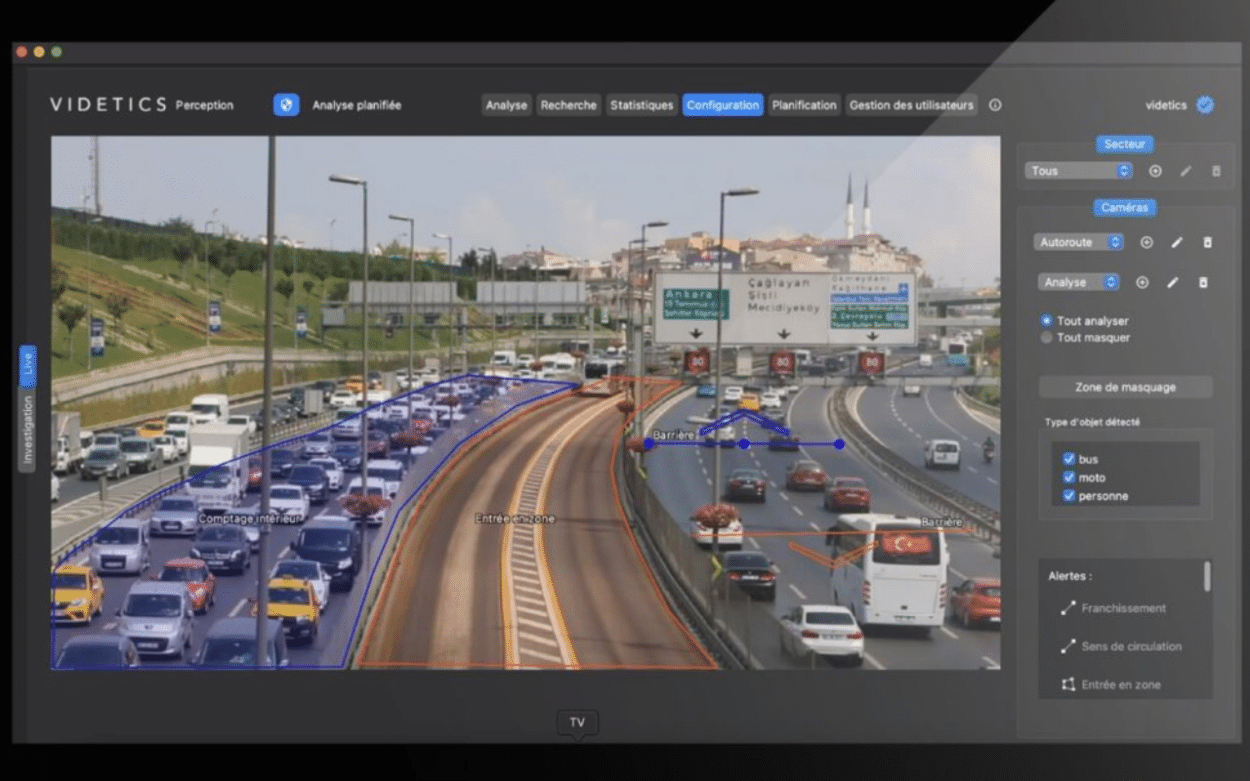Can video surveillance be ethical? In several countries, video surveillance sparks debates, especially when coupled with facial recognition. The French police, in particular, are suspected of concealing the use of such tools for eight years. The French company Videtics, on the other hand, pledges to conduct ethical artificial intelligence-based video surveillance analysis. Recently, they secured a contract related to algorithmic video surveillance during the Paris 2024 Olympic Games. We interviewed one of the startup’s founders, Alan Ferbach, to delve into the technology and its applications in both industry and public sectors.
Can video surveillance and the subsequent image analysis be ethical? While in China, algorithmic video surveillance with facial recognition has proliferated, especially in recent years, and intensified during the COVID pandemic, it has raised suspicion in Europe. In France, the National Commission on Informatics and Liberties (CNIL) closely monitors these practices. Recently, in a comprehensive investigation, French media platform Disclose revealed that the national police had been using the Israeli image analysis software, Briefcam, which includes facial recognition, since 2015, without public knowledge. This disclosure prompted an investigation by the CNIL.
In France and broader Europe, respect for privacy remains a robust value that heavily influences the development and use of surveillance tools, particularly those incorporating artificial intelligence.
This is where Videtics, an image analysis company specializing in video surveillance algorithms, comes into play. Established in 2019, the French company’s name, a blend of “video” and “ethics,” reflects its commitment to handling video protection with caution and attention to purpose and methodology.
As explained by Alan Ferbach, one of the co-founders,
“Ethics is a core value for us.”
Mobility and Security
Videtics specializes in artificial intelligence-driven video analysis for cities and industrial buildings. Established four years ago, the company began marketing its solution this year, already securing clients such as Suez and EDF groups, as well as local authorities in southern France, including the city of Nice.
At the core of Videtics lies an observation: despite possessing video surveillance cameras, both public entities and private enterprises underutilize them, with only 10% of the streams being visually and analytically assessed by an operator.
“For instance, the city of Nice has four thousand cameras and only ten operators. These ten operators cannot continuously monitor four thousand cameras, which is normal.”
This prompted the three co-founders to identify an opportunity. They developed an algorithmic image analysis solution for mobility and security purposes, aiming to assist cities and businesses. The concept involves continuous AI analysis of surveillance images, extracting relevant data for operators.
“Our goal is to use artificial intelligence to identify the right sequences to watch, for a more efficient use of human resources. For cities, we conduct statistical counting to understand how citizens utilize public spaces, contributing to urban planning. We can count the number of vehicles passing through a specific location and provide this information to traffic lights to alleviate city congestion and reduce pollution. We also offer services related to city cleanliness. For example, by correlating the number of people in the street with the volume of waste, we can provide essential data to sanitation services. Regarding security, in the case of a vehicle moving against traffic, the presence of a person on the highway or in a tunnel, or even if someone falls, we can report these situations and automatically generate alerts.”

How Does It Work?
Videtics retrieves videos from pre-installed cameras; the company does not install its own. Its value lies in video analysis, and its solution is compatible with various existing camera types. It also integrates seamlessly with pre-existing video management software, facilitating the retrieval of streams, their analysis, and the transmission of statistical data and alerts as needed.
“We often talk about scenarios which represent different situations. We can create virtual barriers, also known as virtual zones, with specific orientations. For instance, if a vehicle passes this barrier against traffic, an alert will be generated. The creation of these scenarios is crucial. Our AI is essentially performing one task: detecting objects.”
By integrating artificial intelligence based on shape recognition rather than mere movement detection, the solution also reduces false triggers. The continued use of zones and barriers allows for tailored alerts and statistics only on relevant activities, which enhances the overall functionality of the system.
For mobility, Videtics’ software generates dashboards, statistics, and heat maps. All data remains local. For security, it sends alerts to the existing video management software that is used to visualize the streams.
Smart City Applications
Videtics currently serves several local authorities, including Nice, Saint-Paul de Vence, and soon Monaco and Paris. For these communities, the software is employed for detecting individuals, vehicles, and even boats. It primarily focuses on statistical counting and mobility.
In the case of the picturesque village of Saint-Paul de Vence, situated in the hills above Nice and a bustling tourist destination in the summer, Videtics aids municipal teams in monitoring the number of people entering and leaving the village to promote eco-tourism.
The technology also plays a role in law enforcement. Videtics collaborates with the Calanques National Park in Marseille to monitor no-fishing zones. If a boat remains in this area beyond a specified time, Videtics’ software can detect it and immediately transmit the information to the Coast Guard.
“It’s then up to the Coast Guard, equipped with the necessary expertise, to determine whether it’s an innocent boater or a fisherman in violation of regulations.”

Security for Industrial Buildings
Videtics’ software has found application in the industrial sector, boasting clients such as Suez and EDF.
For Suez, a practical use case involves addressing the safety of isolated workers managing multiple Suez sites. Given the critical nature of Suez’s operations as a provider of vital services, ensuring the well-being of isolated workers is crucial.
“If a Suez employee becomes a victim of a robbery, a fall, or any other incident with no one around, we utilize our AI to determine the person’s posture—whether they are standing, sitting, crouching, or have their hands up. If their hands are raised, we can trigger a silent alert. If they are lying on the ground, we can also raise an alert to ensure their safety.”
In the case of EDF, the application is somewhat different, focusing on safeguarding EDF employees. They are required to wear either a helmet or a vest—personal protective equipment (PPE). The system then reports this information, ensuring that individuals without the appropriate PPE are alerted, reinforcing safety protocols.

Ethics
And what about ethics? How does Videtics respect the privacy of individuals appearing in the surveillance images their software is tasked with analyzing?
Anonymity
Addressing GDPR, the CNIL approved the augmented camera aspect over a year ago, particularly when the purpose is statistical analysis. In such cases, no specific authorization is required.
“We have comprehensive measures in place, including Data Protection Impact Assessments (DPIAs) and impact studies, demonstrating that our activities are solely for statistical purposes.”
Their process resembles anonymization. Starting with video data that may contain personal information, the data is processed by algorithms on their local servers. This ensures that no individual sees the raw data, producing only statistical information. Therefore, personal data is entirely eliminated through anonymization, focusing on relevant and privacy-preserving statistical data.
“Importantly, our system does not involve facial recognition, a topic of much debate and concern in software applications.”


Synthetic Data
For density estimation, obtaining relevant data can be challenging. Consequently, they heavily rely on synthetic data generated internally. This approach mitigates concerns about personal data and allows them, he says; to create scenarios such as crowd dispersion or gatherings.
“Currently, we have a team of twenty-four at Videtics, with three dedicated full-time members working on data labeling. This practice sets us apart from our peers. Ethically speaking, I don’t want to outsource this to India or elsewhere. We want to keep it in-house because the data can be sensitive, so it needs to be highly secure. We opt to keep data labeling in-house to ensure security and maintain a higher level of quality, as we have direct control over our ISEA labels, forming the basis of our databases.”
Olympic Games Call For Tender
With the assurance of quality and security, Videtics has recently secured a bid to participate in the surveillance image analysis during the Paris Olympic Games.
“We will be involved in crowd management, detection of vehicles or individuals moving against the designated direction, identifying falls, and also density estimation—estimating the number of people and triggering alerts if there is excessive congestion to prevent issues. However, what we don’t address is weapon detection and fire outbreak detection.”
Videtics didn’t wait for the tender decrees to prepare a solution compatible with major events. Two years ago, the company established the Serenity consortium with several companies from Sophia Antipolis, such as Inocess, which specializes in capturing pedestrian flow, to offer solutions for major events.
Despite the delayed publication of the decrees (the Olympics are less than 8 months away), Alan is confident and ready to meet the Olympic challenge.
“We anticipated it, and today we are more or less in line with what we had foreseen in terms of what would be required.”











